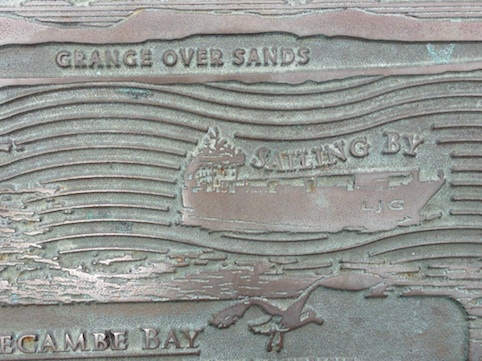Architecture can facilitate the exploration of identity through the examination of the specificity of the context in which it is embedded. The constructed environment is often charged with narrative content, certain elements come to the fore, while others are more modest, more unassuming, but no less important or carefully considered. These mechanisms tell stories, they engage the imagination, they enable, through the construction of space, time and sequence, the development of new forms and places.
Continuity in Architecture will examine two sites; each has an entangled relationship with the fluctuating environment on which it is situated. Grange-over-Sands sits upon the inconsistency of the River Kent at the northern edge of the vast and treacherous mudflats of Morecambe Bay, while Venice was formed upon the mosquito ridden muddy promontories which appeared and disappeared within the watery safety of the silent Lagoon.
Year 6: Projects in Venice
The sixth year projects this year will be based around sites within the Arsenale area of the city. The area provides a rich context for the exploration of an urbanism born of crisis, an experimental architecture responsive to challenging environments, a dense fabric of building and memory. As part of the ERASMUS funded project entitled HAULuP, CiA will be exploring historical sites in the Venice. This will provide the basis for much greater exploration and the definition of the final year project. Current sixth year students are in Venice attending a workshop concerned with the interpretation and protection of the Arsenale area. A choice of these sites, and others in Venice, will form the basis of their final project. Students wishing to join CiA in sixth year will have the same choice of sites and the opportunity to visit Venice.
Technology
insula /in·su·la/ (in´sdbobr-lah) pl. in´sulae [L.] 1. an islandlike structure
Insulation (cf latin) is the purposeful enclosure, conditioning and modification of a structure to allow habitation. We will explore core architectural concepts with technical roots – protection, layering, shelter, threshold – and by solving problems similar to those of past generations we will further link building propositions to history and context.
Reading List: Tafuri, M. Venice and the Renaissance. MIT Press 1995. Mancuso, F. Bruttomesso, R. Veneto Italian Life Style Scenario. Process Architecture 109 1993. Goy, R. Venice. The City and its Architecture. Phaidon 1997. Morris, J. Venice. Faber and Faber 1983. Huber A. The Italian Museum. Edizioni Lybra Immagine. 1997. Janson, A. Bürklin, T. Auftritte Scenes. Interaction with Architectural Space: the Campi of Venice. Birkhåuser 2002. Frascari, M. The Tell-the –Tale Detail. VIA 7: The Art of Architecture 1984. Los, S. Carlo Scarpa, an Architectural Guide. Arsenale Editrice. 1995
Year 5: Projects in Grange-over-Sands and Venice
It is proposed that fifth year students use the small town of Grange-over-Sands as the starting point for a series of projects, and, through the development of ideas about the relationship of public and private, the city and the interior, propose buildings for home and for social life on chosen sites in the town.
Project 1 Finding the Place: A Lexicon of Grange
Project 2 Social Performance: we will collaborate with the planning, design and then partake in a procession
Project 3 Being There: Travel to Venice. Engage in empirical research. Examine, analyse and record key elements of the city
Project 4 Buildings for Home and for Social Life in Grange
How can the relationship between the citizen and tourist be managed within the form of the town? What models and precedents exist for the architectural expression of the relationship between the private and public life of the citizen? How do we build in an environment of density, inundation and collapse?
Essays: Diverse architectural approaches to the creation transformation of space
Reading List: Site Projects by David Leatherbarrow. Critical Regionalism by Kenneth Frampton. Contextualism: Urban Ideals and Transformations by Thomas Schumacher. The Architectural Uncanny by Anthony Vidler. Let the Trumpets Roar! – The Roman Triumph by Richard Brilliant. The Rights of Retreat and Rites of Exclusion: Notes Towards the Definition of Wall by Robin Evans.
“Make way!†cried Krespel; and then running to one end of the garden, he strode slowly towards the square of brick-work. When he came close to the wall he shook his head in a dissatisfied manner, ran to the other end of the garden, again strode slowly towards the brick-work square, and proceeded to act as before. These tactics he pursued several times, until at length, running his sharp nose hard against the wall, he cried, “Come here, come here, men! break me a door in here! Here’s where I want a door made!â€
The Cremona Violin. E. T. A. Hoffmann


